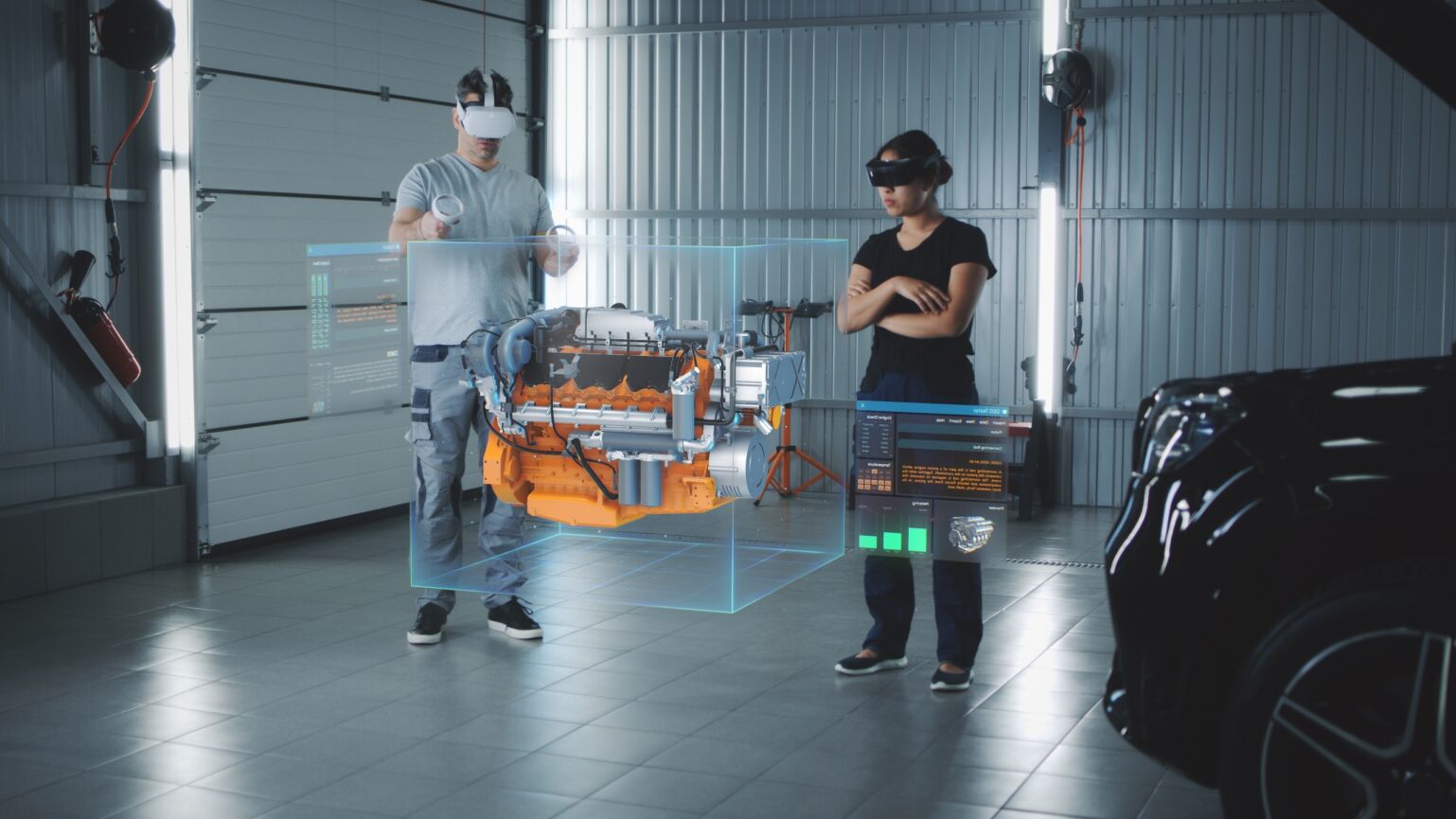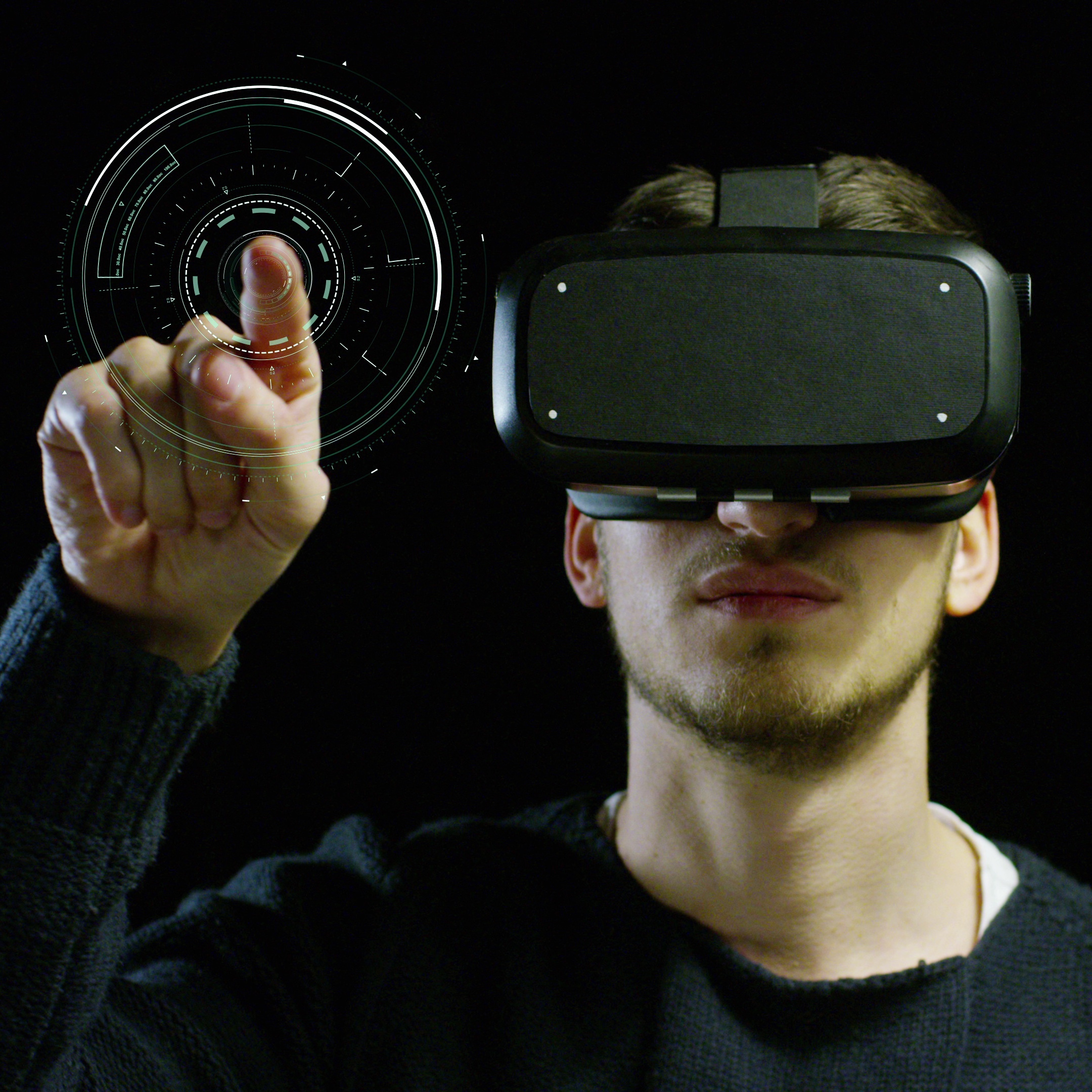The Industrial Metaverse – A Gamechanger
A little over a year ago, metaverse was the biggest buzzword around. However, in the last few months, it has lost its spot in the limelight to AI. But that’s the consumer market verdict – or current consumer sentiment – towards the metaverse. The metaverse is still relevant, thriving, and useful in the industrial context. In fact, it’s bigger and better than ever.
The global industrial metaverse industry was valued at USD 22.1 in 2022 and is expected to be valued at over USD 93 billion by the end of 2031, growing at a CAGR of over 17.5%.
This avatar of the metaverse – known as the industrial metaverse – is quite different from the consumer metaverse and platforms like Roblox and Decentraland, which focus on social interaction and entertainment. On the other hand, the industrial metaverse focuses on process optimizations that can help businesses improve cost-effectiveness and sustainability. The industrial metaverse achieves this by using digital twins or virtual representations of physical processes, machines, systems, and other real-world objects.
Siemens, a front-runner in trying and enabling industrial metaverse utilization, calls it “the next chapter of digitization.”
So, what makes the industrial metaverse a game-changer? Well, the industrial metaverse has the power to accelerate go-to-market timelines, pre-empt and prevent manufacturing facility breakdowns before they occur, and enable recombinant innovation.
In this blog, we’ll cover the basics of how the industrial metaverse works, understand use cases, and what it will take for metaverse technology to succeed in its promises and goals.
Introduction to the Industrial Metaverse
What is the industrial metaverse, and what it isn’t
Let’s start by separating myth from the truth. Most people think the metaverse is a virtual world where people can meet, socialize, and play games. Something like what is depicted in the movie Ready Player One. However, this is a myth made famous by science fiction. Instead, the metaverse is a collection of different “universes.” These different universes refer to different experiences – created by different entities – for their specific use case. In the case of an industrial universe, it is a collection of business entities built for specific purposes. Businesses often make digital replicas of factories – more about this later. An industrial metaverse is also different from an enterprise metaverse, though the two concepts do overlap in some ways. Both target business users and help companies to optimize the way they work. However, the enterprise metaverse aims to enable better collaboration, whereas the industrial metaverse aims to streamline processes for improved sustainability and cost-effectiveness.
This implies that the industrial metaverse is a virtual environment that optimizes processes. It achieves this optimization with real-time data analytics, predictive maintenance, and remote monitoring – simulation plays a significant role in the industrial metaverse’ s ability to carry out these tasks. And how does it carry out its simulations of real-world objects and scenarios? Simple. By creating digital twins of these subjects.
Tech working hard behind-the-scenes
Digital twins first came into use in the industrial context for monitoring, maintenance, automation, and training tasks. As such, they have the inherent capabilities needed for optimization, and the industrial metaverse platform can push digital twins to achieve more.
…with the help of the Internet of Things (IoT)
IoT and digital twins are a match made in heaven as far as process optimization and the industrial metaverse go. Together, they become the Internet of Twins, allowing businesses to simulate and co-simulate projects. Co-simulation implies a deeper level of simulation, where the subsystems are modeled and simulated in a distributed manner.
However, although IoT and digital twins are big contributors to what makes the industrial universe functional and valuable, other technologies are just as crucial.
These include extended reality (XR), 5G, and AI. Here’s how:
XR is at the core of the process optimizations promised by the industrial metaverse. The industrial metaverse simply provides a platform – a central location of sorts – for immersive experiences to be housed, experienced, and utilized.
5G is absolutely critical to the metaverse’s existence because it relies heavily on vast computing power and faster networks. It probably isn’t far-fetched to say No 5G = No industrial metaverse.
AI helps make the industrial metaverse’s simulations, as one might expect, more intelligent. For example, AI can help predict which of a simulation’s many solutions are most likely to work or might even suggest ways to improve the simulation.
Key players driving the industrial metaverse onward and upward
Microsoft is enabling companies with the tech that goes behind the industrial metaverse, including IoT and Digital Twins.
According to its website, NVIDIA is collaborating with Siemens to connect its Omniverse to the Siemens Xcelerator (a data transformation platform) to enable “full-design-fidelity, live digital twins that connect software-defined AI systems from edge to cloud.” The partnership makes this possible because the Siemens Xcelerator offers a robust industrial ecosystem, while NVIDIA Omniverse is an AI-led, real-world-accurate, real-time virtual world.
How can the industrial metaverse impact the way that businesses operate?
The industrial metaverse IRL
Let’s start by looking at a few examples of the industrial metaverse in action.
The Siemens factory in Nanjing, China, was designed entirely in the virtual world before IRL construction began. The factory output optimizations of this industrial metaverse move were:
- Productivity increase – up to 20%
- Manufacturing volume flexibility improvement – 30%
- Space efficiency improvements – 40%
The Coca-Cola Hellenic Bottling Company factory in Vienna worked with Microsoft to create a digital twin of its facility. The resulting optimizations from this industrial metaverse move were:
- Improved supply chain management – This was the consequence of better collaboration and communication among suppliers, distributors, and retailers to analyze sales projections, production schedules, and potential supplier restrictions
- Improved inventory management – The digital twin helped them more effectively manage inventory, capacity, and shipment information to pre-empt shipping delays and come up with workarounds to ensure efficient delivery. Plus, the factory team can simulate scenarios and react to demand shifts with greater agility,
- Smoother processes – The digital twin of the factory also enabled automated yard management and vision picking. This, in turn, drove improved resource management and availability checks.
While applauding this digital twin move and positive outcomes, Siemens Advanta also envisioned further industrial metaverse initiatives that the Coca-Cola HBC could undertake. Siemens Advanta indicated that the initiatives would help Coca-Cola HBC benefit from still greater “operational efficiency, sustainability, and profitability” while also meeting the evolving expectations of its clients and other stakeholders. Let’s take a look at the recommendations:
Recommendation # 1: Establish an integrated set of Digital Twins
Purpose: Real-time, collaborative communication among suppliers, distributors, and retailers to analyze sales projections, production schedules, and potential supplier restrictions
Main benefit envisioned: Optimized supply chain management.
Additional benefits: They could monitor inventory, capacity, and shipment information on a 3D supply chain network map (immersive) to identify potential shipping delays and model workarounds to ensure efficient delivery.
Recommendation # 2 Introducing an intelligent packaging system
Purpose: Real-time tracking of a can or bottle’s position and interactive inventory status.
Main benefit envisioned: Improved replenishment and routing decisions and ability to shape demand using dynamic pricing based on customer preferences.
Recommendation # 3 Leveraging AI-generated synthetic data
Purpose: Create more precise and responsive forecasting models to balance supply and demand.
Benefit: Agile adaptation to unforeseen occurrences like pandemics, natural disasters, and geopolitical shifts.
As these examples illustrate, the industrial metaverse can accelerate the planning of manufacturing plants, construction projects, and even entire cities. It can also improve operations over the entire lifecycle of these projects by simulating behavior and spotting weak spots that can be eliminated and efficiencies that can be replicated.
Use cases and benefits
Let’s distill the use cases and benefits of the industrial metaverse.
Improved collaboration and remote training: Because the industrial metaverse – and its individual experiences – reside in a virtual location, teams worldwide can share ideas and best practices in real time.
Virtual innovation: The industrial metaverse enables low-cost, high-speed virtual innovation that helps companies plan better, more profitable product roadmaps.
Greater cost-effectiveness and reduced emissions: With more efficient operations, virtual (instead of IRL, which is costly) innovation, and better inventory management, companies waste less, contributing to cost savings and a lighter carbon footprint. Digital twins are also used to identify more ecologically sound ways of doing things. Coca-Cola HBC is using its digital twin to select environmentally friendly transportation and routes, for example.
Mega popularity for the industrial metaverse
Coca-Cola and Siemens aren’t the only industrial metaverse movers and shakers. Many big names are embracing industrial metaverse technology. BMW, for instance, created a virtual twin of its production plant in Bavaria before building the physical facility. Boeing uses a digital twin development model to design its airplanes. “Virtual Singapore” is a digital representation of the Southeast Asian nation that the government created to support its policy decisions and test new technologies. Hyundai has inked a partnership with Unity to design a metaverse factory and product roadmap. NASA is using the industrial metaverse through HoloLens technology that assists astronauts at the International Space Station. Unilever used a digital twin to accelerate the identification of necessary modifications to new product lines, reducing GTM timelines and improving costs. There are tons of examples out there.
That said, a digital twin for a 60,000 sq ft office building would cost over $1.2 million, meaning that many companies might be unable to access tech immediately or in the future. However, more companies could enjoy access and associated benefits if industrial metaverse technologies are made available under as-a-service models.



